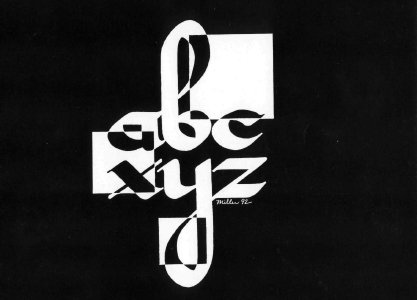
On Life
By Jennifer Richards '93
Non-fiction Writing
Writing Objective: Write an essay on the model of Montaigne.
Whenever I have to order things for a chemistry or biology lab project, I go to the Sigma catalog. Among the other $250 worth of chemicals and bacteria I had ordered for a cell biology experiment, I had to buy a DNA stock solution. On page 1215, under the heading of, “Standards for Electrophoretlcs” I found the specific plasmid I was looking for. Since the biology department is short of funds, the first thing I looked at was the price: $47.50 for 12.5 micrograms. Considering that 12.5 micrograms is about the size of a small piece of dust, I was about to buy something I couldn’t even see—and what if I dropped it.
Later that night I was writing a letter to a non-scientist friend of mine, and to make the point about how expensive the DNA was, I converted the price to one ounce. I manipulated the figures and had to try them three times and then recheck my arithmetic. I kept getting the same number on my calculator, and I couldn’t believe it. I did the calculation by hand: same answer. I called my friend Dave and asked him to do it on his calculator. The same—$108,435,375 per ounce. In its most basic definition, DNA is the essence of life. There aren’t many requirements for something to be considered biologically alive, but the biggest one is that it has DNA (or the equivalent RNA). Sigma, under the demands of a market society, had put a price, a value, on life. I understand that Sigma had to incorporate their time, material costs, maintenance costs, and other similar things in their price: but, I think their price is high because people are willing to pay it. The laws of supply and demand say that if people need a product, they will pay a higher price for it. Considering that genetic research is a hot area right now, people are willing to buy DNA for $108,435,375 per ounce, and I could calculate the value of myself by simply determining the total weight of DNA in my body and multiplying by $108,435,375. I didn’t.
I don’t want to know how much I am worth. Or not worth.
I have a collie named Clipper. I’d like to think he is purebred, but his differently colored eyes and lopsided coat prove otherwise. I bought him three years ago at a pet store in the mall. I always go Into the pet store when I am In the mall, and this puppy had been there for months. One day in July I went in the store, and there was a sign above his cage that had a sale price of $233 on it. It said, “Please buy me now or else….” Clipper was too old for them to sell, and if someone didn’t buy him, they would kill him. I went home with a dog and an overdrawn checking account. Clipper has proceeded to eat all of our redwood lawn furniture ($275 worth), tear up our landscaping ($300 worth), and trip everyone who comes out to see him with his excited jumps. No one seems to care, though, because when he trips someone or eats a piece of furniture, he Just acts as If it were a game and he wants to play more. He chases his tail frequently and barks for hours at a beetle. He jumps, plays, and runs, and always seems to be smiling that tongue-out-of-the -mouth -doggie -smile.
My dad tried to chain Clipper to a tree once, and Clipper sagged all over. He wouldn’t eat, and he stood in one place with his tail tucked and his ears drooping. He didn’t even wag his tail when I went to see him. He just looked up at me with his brown eyebrows strained in a sad expression and his nose, ears, and tail all pointing toward the ground. I suppose there was a psychological or scientific explanation for why Clipper was acting that way, but I didn’t know what it was, and I didn’t care. I felt guilty, my dad felt guilty, and we let Clipper go.
The biology department decided to let me buy the DNA even though it was so expensive. I wonder who set the price of the DNA? Are they someone with a Ph.D. in biology who has studied life, knows the definition, has memorized the intricacies of evolution, and is therefore qualified to asses the value of the specimens? I wonder how the pet store owner decided that my dog was worth $233 on sale? Their jobs probably weren’t too difficult: they just adjusted the prices according to the market and what people were willing to pay. I’d like to see the pet store put a price on my dog’s sloppy kisses, on his thrashing tail, and on his midnight howls at only-god-knows-what. I would like to see any scientist put a value on DNA. How can a price be tagged on that which is responsible for making everything we need to live, for containing everything about us, for making us each different, for defining us from everyone else, and for the consequences of our uniqueness? But I will buy the DNA for $47.50.